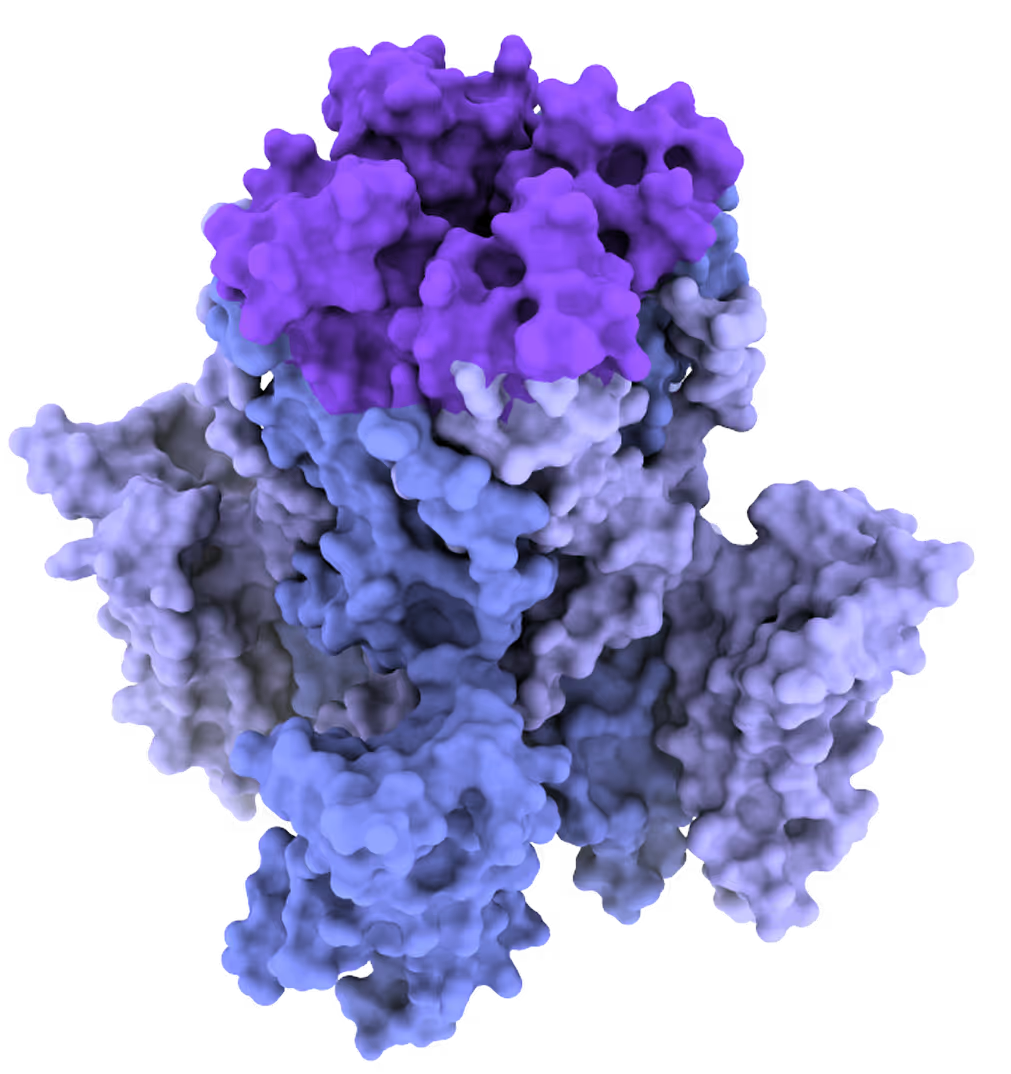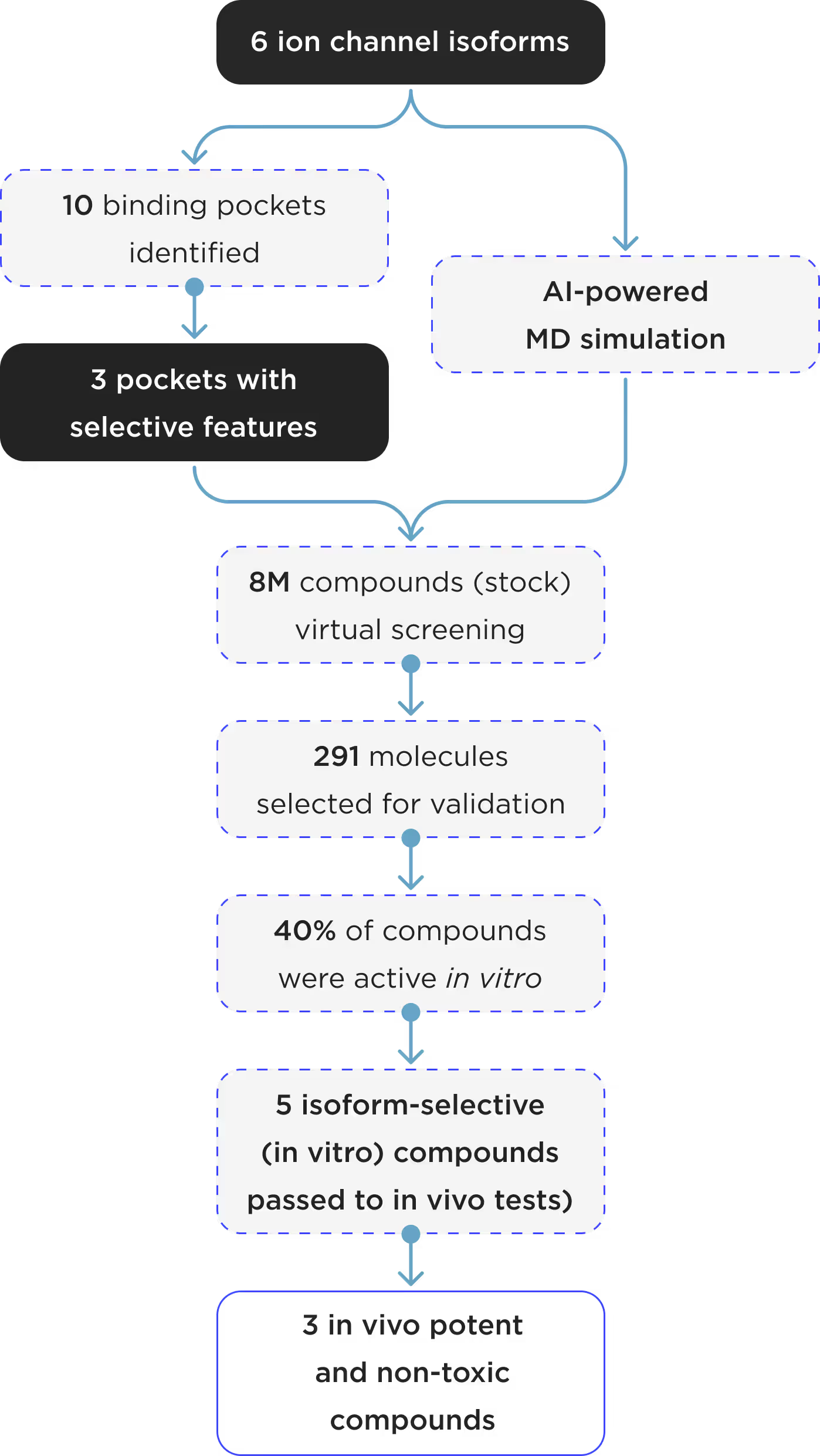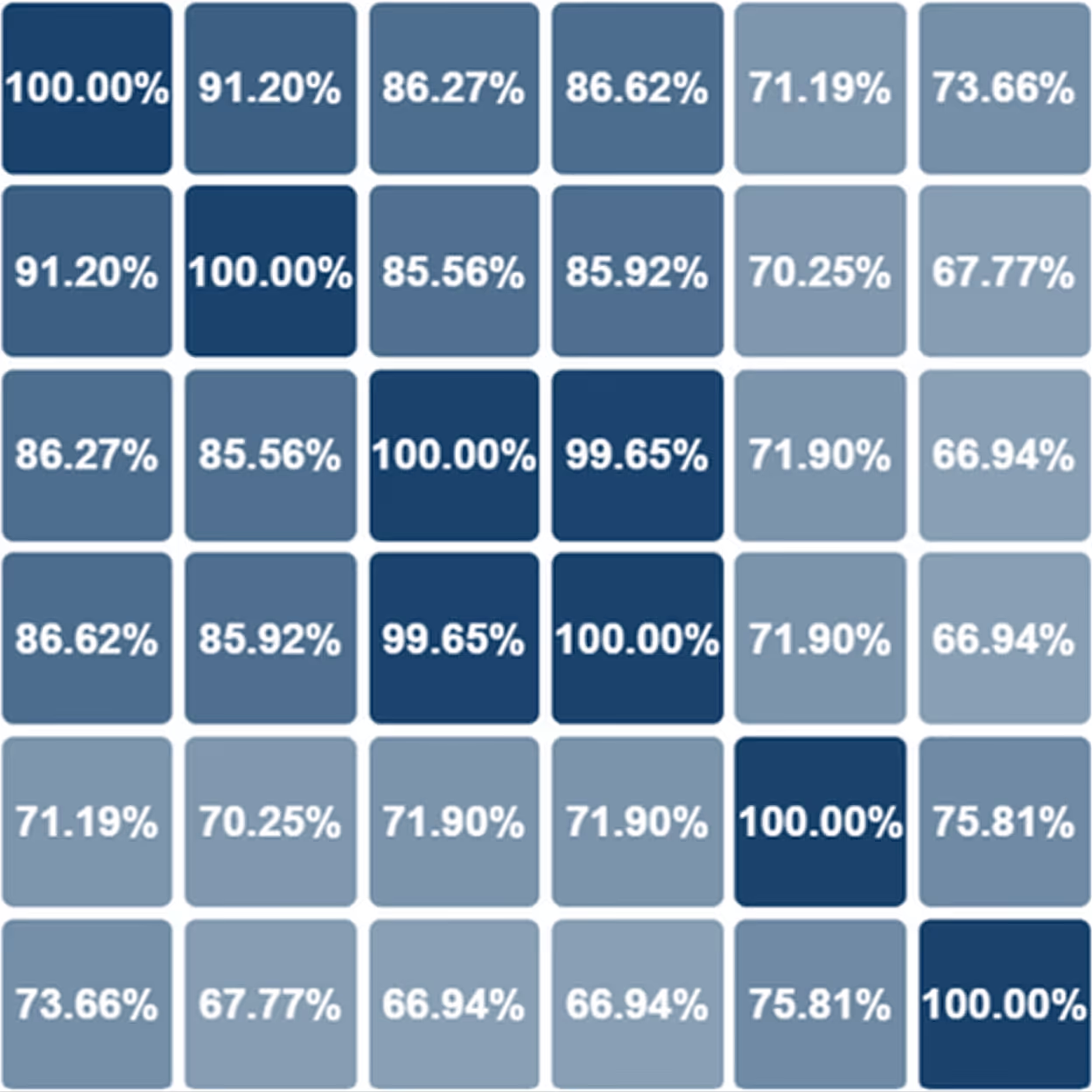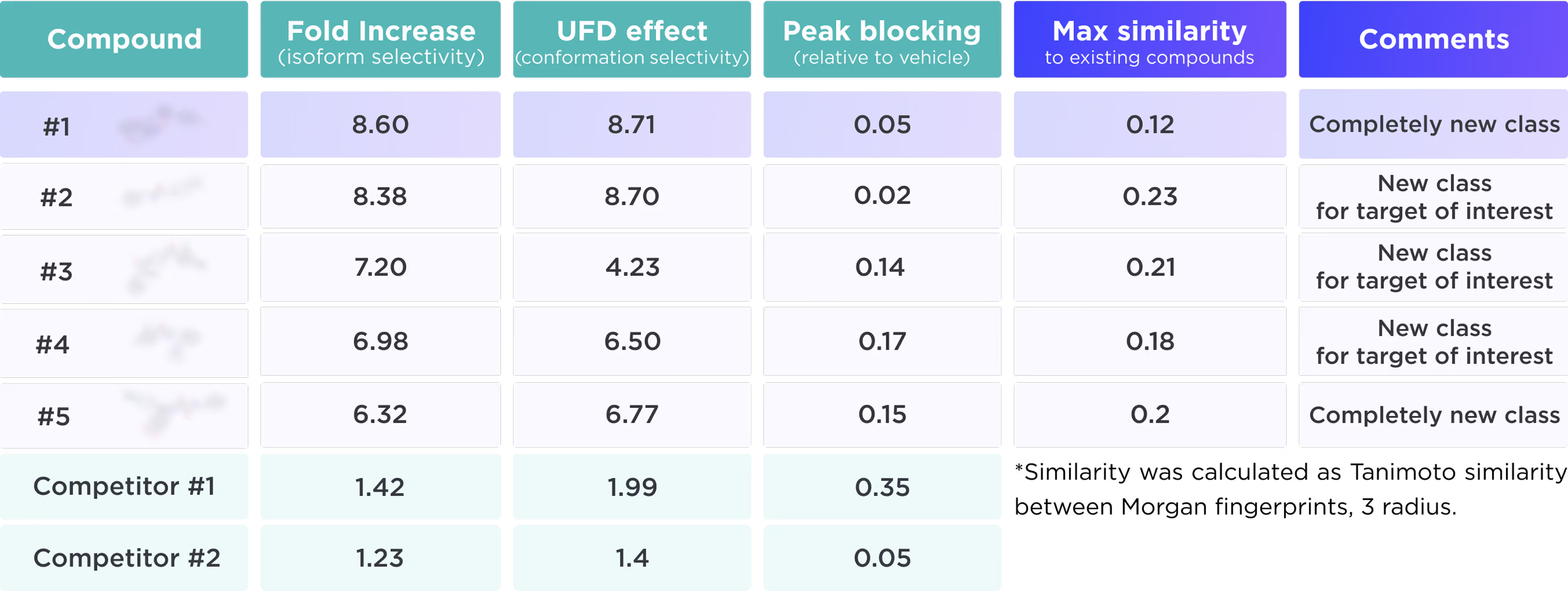Designing selectives for one of six ion channel isoforms
Achieving in vivo PoC with the first ‘shot’

40%
hits active
in vitro
8 fold
isoform/conformation selectivity
3
compounds active
in vivo
2
completely new classes
of compounds

01/ Background
- The target is in the family of highly similar ion channel isoforms.
- The goal is to develop selective inhibitors specifically to the open channel conformation.
- The exact location of the most favorable binding pocket for achieving selectivity is unknown.
- In vivo PoC was essential to confirm therapeutic efficacy.
02/ Methodology
- 3 tentative binding sites were identified for each isoform by
proprietary Receptor.AI pocket detection workflow:
in the outer channel pore, inside the channel cavity,
and between the functionally important transmembrane helices. - Selectivity assessment was performed based on differential
pocket pharmacophore and generative AI binding pose prediction. - Stock chemical space of 8M compounds was used as well as a custom focused diversity database of 50K compounds.
- 291 hit candidates were selected for experimental validation.
03/ Metrics
- Fold increase of effect on target isoform compared to off-targets.
- UFD effect: the preference of the compound to block the active channel state relative to the resting state.
- Peak blocking of the target channel at 120 μM of the compound relative to the vehicle.
04/ Results
- 40% of hit candidates validated active in vitro.
- 5 highly selective hits found, with the top hit compound exhibiting 8.6x selectivity.
- 3 compounds demonstrated substantial in vivo activity
(murine model) and were proven to be non-toxic.

*Similarity matrix of full-length isoforms


